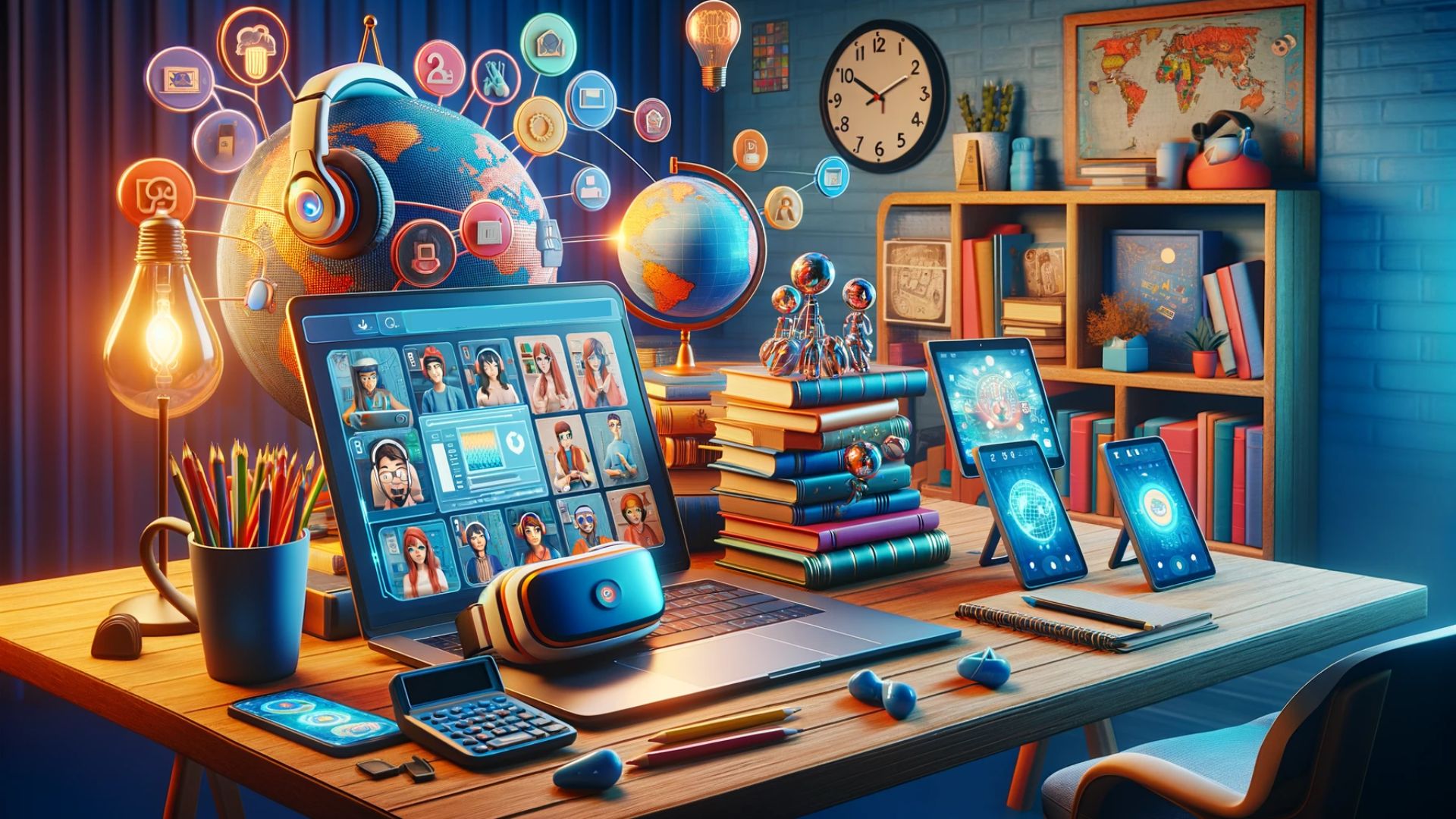Discover the key challenges of remote learning and explore practical solutions to enhance online education. This article offers insights into overcoming obstacles for educators and students, with real-life examples and action-oriented strategies to improve your remote learning experience.
In the digital age, remote learning has become an integral part of our educational landscape. It offers the promise of accessibility and flexibility, breaking down geographical barriers and providing opportunities for lifelong learning. However, as much as remote learning has opened doors for many, it also presents a unique set of challenges that can affect the quality of education and the learning experience. Understanding these challenges is the first step towards creating a more effective and engaging learning environment for all.
Connectivity and Technological Issues
One of the most immediate challenges is the digital divide. Not everyone has access to reliable internet or the necessary devices for online learning. This disparity can hinder students’ ability to participate in classes, access materials, and complete assignments. For example, a student living in a rural area might struggle with slow internet speeds, making it difficult to stream live lectures or download resources.
Solution: To mitigate this, educators and institutions can offer asynchronous learning options, such as recorded lectures and offline assignments, ensuring that all students can access learning materials, regardless of their internet situation.
Engagement and Motivation
Remote learning often lacks the interpersonal interaction of traditional classrooms, leading to feelings of isolation and decreased motivation among students. The absence of a physical classroom environment can make it hard for students to stay engaged and motivated.
Real-Life Example: Consider a student who thrives on group discussions and direct feedback from instructors. Moving to a remote learning setup might result in a loss of these motivational factors, impacting their learning experience.
Solution: Incorporating interactive elements like discussion forums, group projects, and regular video check-ins can help create a sense of community and engagement. Gamification elements can also add a fun and competitive edge to learning.
Time Management and Organization
Without the structure of a physical classroom and regular schedule, students often struggle with managing their time effectively. The flexibility of remote learning can sometimes lead to procrastination and disorganization.
Solution: Tools like digital planners, time management apps, and setting up a dedicated study space can help students create a routine and structure their day more effectively. Educators can also assist by providing clear deadlines and regular reminders.
Adaptation to Different Learning Styles
Remote learning typically favors certain learning styles over others, particularly visual and reading/writing learners. Those who prefer kinesthetic or auditory learning might find it more challenging to adapt to the primarily visual and text-based content of online courses.
Solution: To address this, educators can diversify the types of materials and activities used in their courses, including interactive simulations for kinesthetic learners and podcast-style lectures for auditory learners.
Assessment and Feedback
Assessing students’ knowledge and providing timely feedback can be more challenging in a remote learning environment. Traditional testing methods may not always translate well online, and instructors might struggle to gauge students’ understanding effectively.
Solution: Alternative assessment methods, such as open-book exams, project-based assignments, and peer review processes, can offer more meaningful insights into students’ learning progress. Utilizing online tools for quick quizzes and feedback can also enhance the assessment process.
Action Point
Understanding and addressing the challenges of remote learning is essential for creating a supportive and effective educational environment. By recognizing the potential obstacles and implementing targeted solutions, educators and students can maximize the benefits of remote learning. It’s time to embrace the opportunities that technology offers for education by adapting our strategies to meet the diverse needs of learners.
Start by evaluating your current remote learning experience, identify the challenges you face, and explore the solutions suggested. Whether you’re an educator looking to improve your online courses or a student seeking to enhance your learning experience, taking proactive steps to overcome these obstacles can lead to a more engaging and successful remote learning journey.
Embrace the change, explore the solutions, and commit to making your remote learning experience as effective and enjoyable as possible.
Why Should You Care?
Understanding the challenges of remote learning is crucial in today’s educational environment, where digital platforms and online resources play a significant role in our access to education. Whether you’re a student, educator, or parent, recognizing and addressing these challenges can enhance the learning experience, improve outcomes, and ensure that all learners have equal opportunities to succeed. As remote learning continues to evolve, being informed and proactive can make a significant difference in overcoming obstacles and capitalizing on the benefits of digital education.
Key Takeaways:
- Accessibility and Technology: Ensuring all students have access to reliable internet and devices is fundamental to the success of remote learning.
- Engagement: Strategies to increase student engagement include interactive elements, group projects, and regular feedback.
- Time Management: The importance of organization and time management tools in helping students navigate the flexibility of remote learning.
- Learning Styles: Adapting materials to suit various learning styles can enhance the effectiveness of remote education.
- Assessment Methods: Innovative assessment methods can provide more accurate reflections of student understanding and progress in a remote learning environment.
Keywords and Definitions:
- Remote Learning: The process of teaching and learning through digital platforms, allowing students to learn outside of traditional classroom settings.
- Digital Divide: The gap between individuals who have access to modern information and communication technology and those who do not.
- Asynchronous Learning: Learning that does not occur in the same place or at the same time, allowing flexibility for students to access materials at their convenience.
- Gamification: The application of game-design elements in non-game contexts to improve engagement and motivation.
- Kinesthetic Learning: A learning style that involves physical activity rather than sitting and listening to lectures.
- Digital Planners: Online tools that help individuals organize their schedules, tasks, and deadlines.
- Interactive Simulations: Digital simulations that allow students to engage with and explore complex concepts through interactive means.
- Open-Book Exams: Tests that allow students to refer to their notes, textbooks, and other resources while answering questions.
- Peer Review: A process where students evaluate each other’s work to provide feedback and improve learning outcomes.
- Digital Literacy: The ability to find, evaluate, and communicate information through digital platforms.
Frequently Asked Questions:
How can remote learning be personalized for each student?
Personalizing remote learning involves using adaptive technology that adjusts to individual learning speeds, providing personalized feedback, and offering a variety of learning materials to cater to different interests and strengths. Educators can use data from online assessments to understand each student’s needs and tailor the learning experience accordingly.
Can remote learning be as effective as traditional classroom learning? Yes, when implemented with thoughtfully designed instructional strategies, engaging content, and support systems for students, remote learning can be as effective as traditional classroom learning. The effectiveness also depends on the commitment of educators to adapt their teaching methods and the students’ motivation and discipline to learn independently.
Myth Buster:
Myth: Remote learning is easier than traditional learning.
Reality: Remote learning requires a high level of self-discipline, time management, and motivation. The absence of a physical classroom environment can make it challenging for some students to stay focused and engaged. Additionally, the need for digital literacy and navigating various platforms can add complexity to the learning process.
Let’s Talk:
- How do you think remote learning could be improved to better accommodate diverse learning styles?
- What has been your biggest challenge with remote learning, and how did you overcome it?
- Do you believe that remote learning can replace traditional classroom learning in the future, or will it always be complementary?
I encourage you to share your thoughts and experiences in the comment section below. Let’s learn from each other and work towards making remote learning more accessible and effective for everyone.










0 Comments